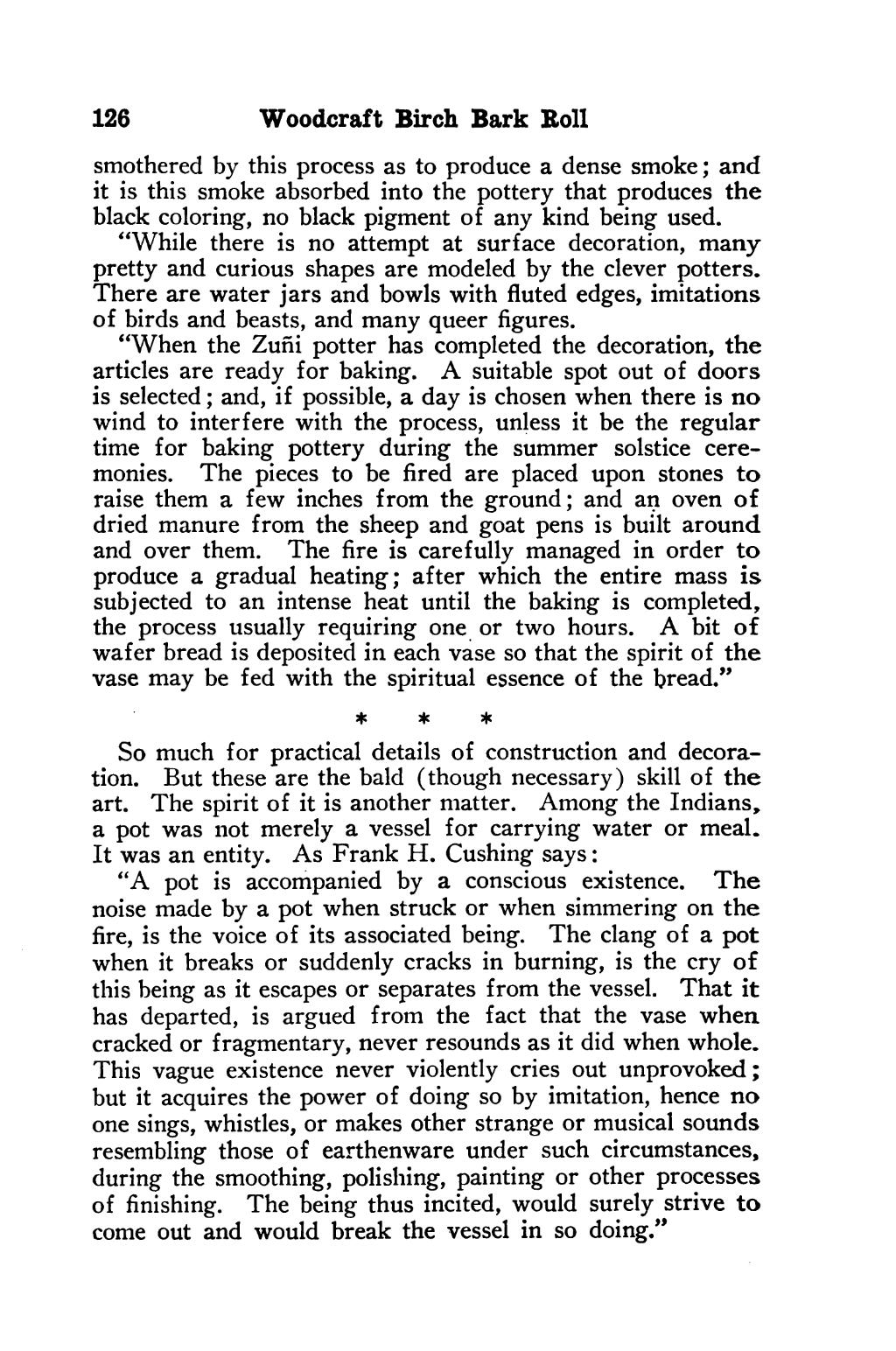126 Woodcraft Birch Bark Roll smothered by this process as to produce a dense smoke; and it 1s this smoke absorbed into the pottery that produces the black coloring, no black pigment of any kind being used. “While there is no attempt at surface decoration, many pretty and curious shapes are modeled by the clever potters. There are water jars and bowls with fluted edges, imitations of birds and beasts, and many queer figures. “When the Zufii potter has completed the decoration, the articles are ready for baking. A suitable spot out of doors is selected ; and, if possible, a day is chosen when there is no wind to interfere with the process, unless it be the regular time for baking pottery during the summer solstice cere- monies. The pieces to be fired are placed upon stones to raise them a few inches from the ground; and an oven of dried manure from the sheep and goat pens is built around and over them. The fire is carefully managed in order to produce a gradual heating; after which the entire mass is subjected to an intense heat until the baking is completed, the process usually requiring one or two hours. A bit of wafer bread is deposited in each vase so that the spirit of the vase may be fed with the spiritual essence of the bread.”
- * >
So much for practical details of construction and decora- tion. But these are the bald (though necessary) skill of the art. The spirit of it is another matter. Among the Indians, a pot was not merely a vessel for carrying water or meal. It was an entity. As Frank H. Cushing says: “A pot is accompanied by a conscious existence. The noise made by a pot when struck or when simmering on the fire, is the voice of its associated being. The clang of a pot when it breaks or suddenly cracks in burning, is the cry of this being as it escapes or separates from the vessel. That it has departed, is argued from the fact that the vase when cracked or fragmentary, never resounds as it did when whole. This vague existence never violently cries out unprovoked ; but it acquires the power of doing so by imitation, hence no one sings, whistles, or makes other strange or musical sounds resembling those of earthenware under such circumstances, during the smoothing, polishing, painting or other processes of finishing. The being thus incited, would surely Strive to come out and would break the vessel in so doing.”
